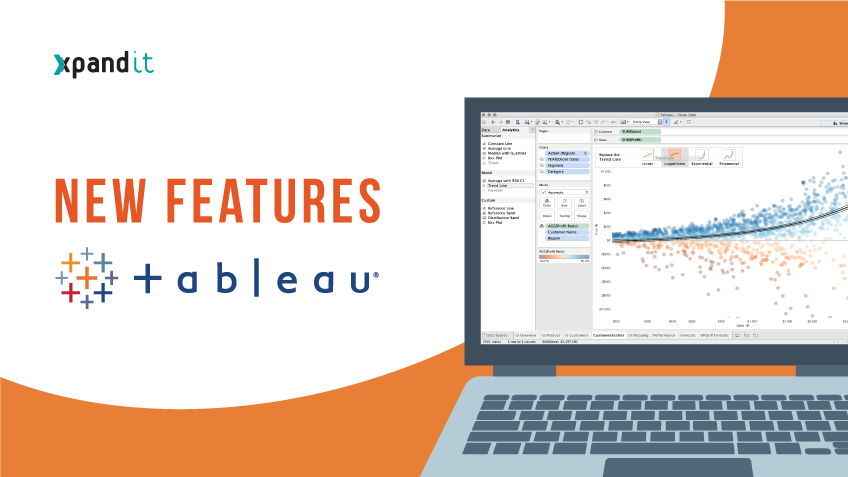Nowadays, data is the foundation of business and nothing is complete without getting the best data you can, then turning this same data into insight using tools like Tableau. Tableau provides an intuitive analytics platform that empowers people of any skill level to work with data, and it’s widely known for helping companies model, explore and visualise their data.
Salesforce is a cloud-based software-as-a-service platform, amazingly customisable with tons of integration functionalities. With Salesforce, companies can manage important functions such as sales management, accounting planning, time management and team collaboration. It’s a leader in the CRM (Customer Relationship Management) sector and is implemented in thousands of companies around the world. It’s also a really useful software for managing sales data and it performs even better if you combine it with Tableau.
In this blog post, I’m going to give the 5 integration benefits for companies and why it brings more value than the two tools do separately. If you’re interested in finding out how to connect Tableau to Salesforce, here’s a how-to guide to do just that.
Looking at the long-term perspective:
Tableau Improvements
As part of Salesforce, Tableau will be positioned to scale and further its mission to help people see and understand data, delivering even more innovation to more people, faster than ever before. Tableau will have access to the Salesforce Customer base and more resources, which means we can expect a big push in terms of new features and functionality, bringing a distinct advantage over other competitors in the market. This will enhance the engagement of the Tableau community with Salesforce and possibly boost Salesforce’s market share.
Artificial Intelligence & Business Intelligence blend
Salesforce Einstein is the first comprehensive Artificial Intelligence (AI) for CRM. It’s an integrated set of AI technologies that makes Salesforce Customer 360 smarter and pioneer every way. With the 360-degree view of your company’s business, it’s possible to know which prospects to target, which territories to align, which cross-sell opportunities to pursue and which leads to prioritize.
Innovation on Salesforce Einstein will fuse with BI capabilities of Tableau, which will give rise to a best-in-class unbeatable platform capable of delivering the next level of customer success with advanced AI capabilities, making Salesforce the world’s smartest CRM. We are really interested in this one and have big hopes for this to work and improve this sector.
However, there are already immediate benefits:
Salesforce improvements
Salesforce will play an even greater role in driving digital transformation, enabling companies around the world to tap into data across the entire business and get deeper insights to make smarter decisions.
An easy fusion of Salesforce products (Sales, Marketing, Commerce, etc.) and complex customer data will deepen the system’s capability of understanding the data resulting in deeper insights into business opportunities, making existing CRM systems more intelligent than ever before. The combination will also let customers visualise data and share insights across various levels of the organisation. With Tableau, Salesforce will bring data to life with new and innovative dashboards and reports, getting all the information needed on the same page, saving time and making better analyses of the data.
Get analysis in minutes
Tableau’s Dashboard Starters allows Tableau Online customers to quickly visualise data. This feature provides pre-designed dashboards, built to help you hit the ground running with actionable data analysis in minutes.
Sales teams are given important metrics to track a world-class sales department: how far ahead of quota you are, the size of your pipeline, what’s going well and what could use some improvements. With Salesforce Starters, you can fine-tune the sales funnel and improve the power of sales data faster than ever before.
Self-reliant Salesforce for everyone
Tableau’s Salesforce Canvas Adapter embeds dashboards in Salesforce to help you put analytics where and when your team needs them, ending the fear of missing out on potential opportunities inside the system, due to a lack of necessary intelligence. One of the best ways to ensure your people have the data to make the best decisions is to put analytics right into the systems they use every day. Most salespeople live inside Salesforce, deciding who to call and planning account strategy.
In conclusion, Salesforce and Tableau will together revolutionise the perspective of how businesses understand their customers using data.
Marc Beniott, Chairman and co-CEO of Salesforce, says: “We are bringing together the world’s #1 CRM with the #1 analytics platform. Tableau helps people see and understand data, and Salesforce helps people engage and understand customers. It’s truly the best of both worlds for our customers – bringing together two critical platforms that every customer needs to understand the world”.












